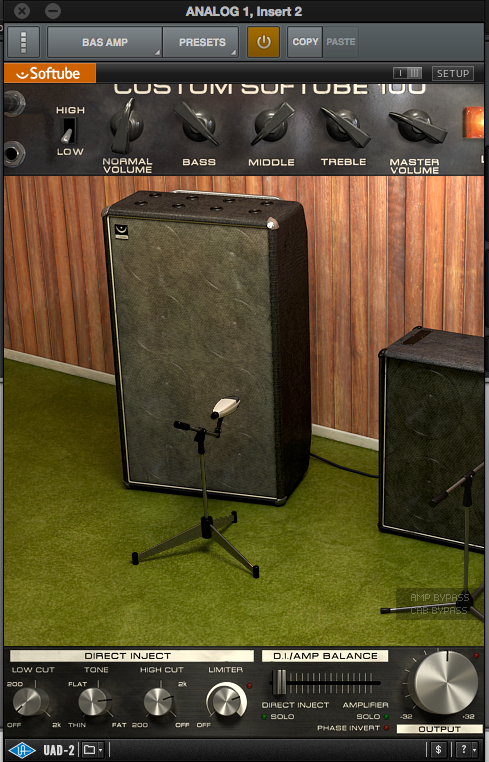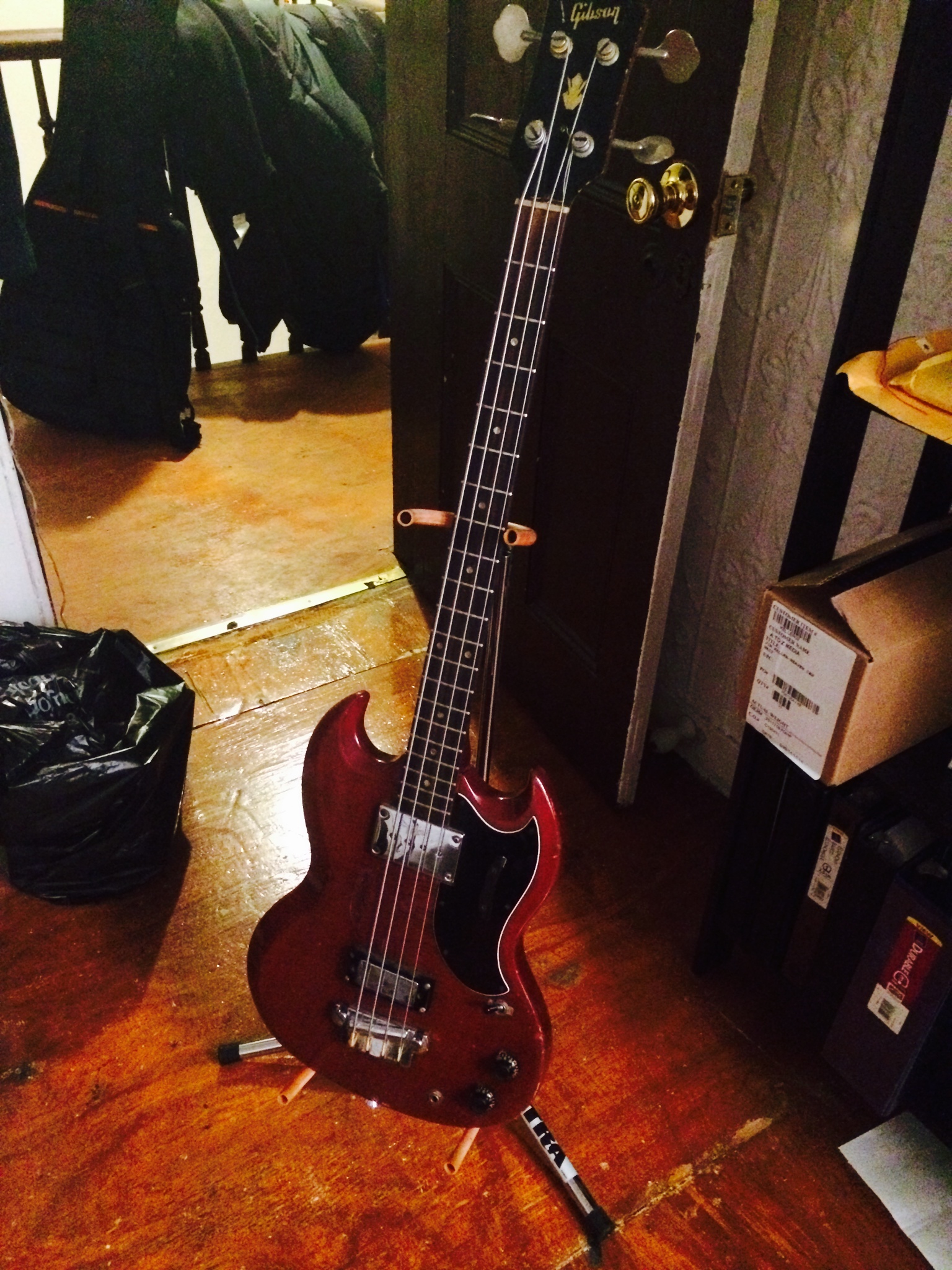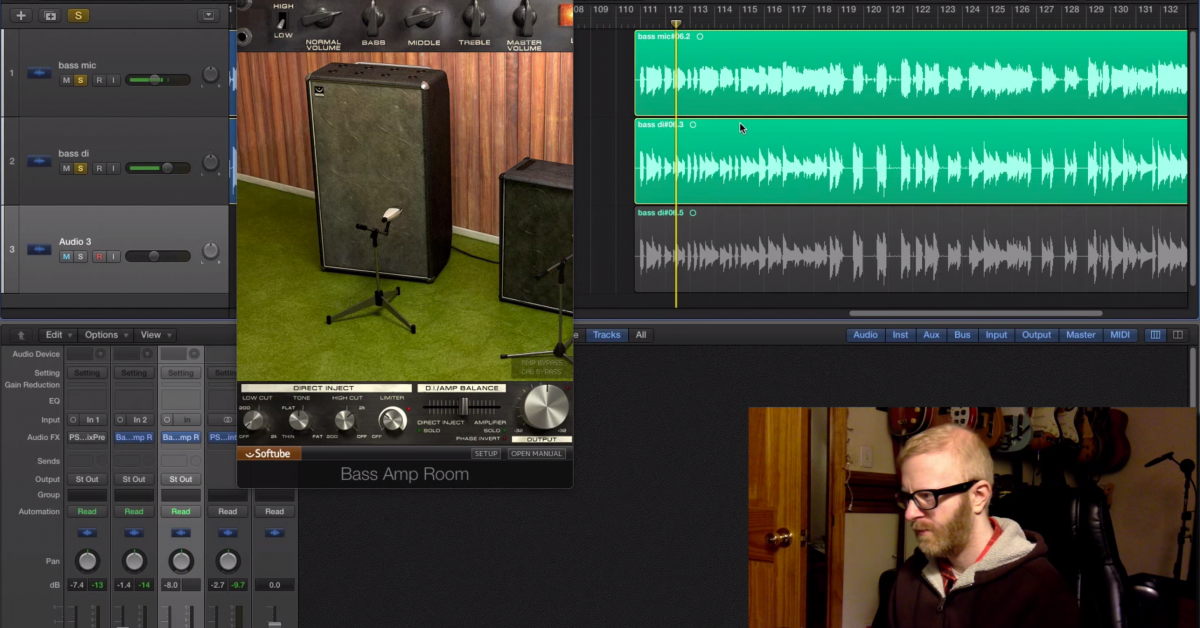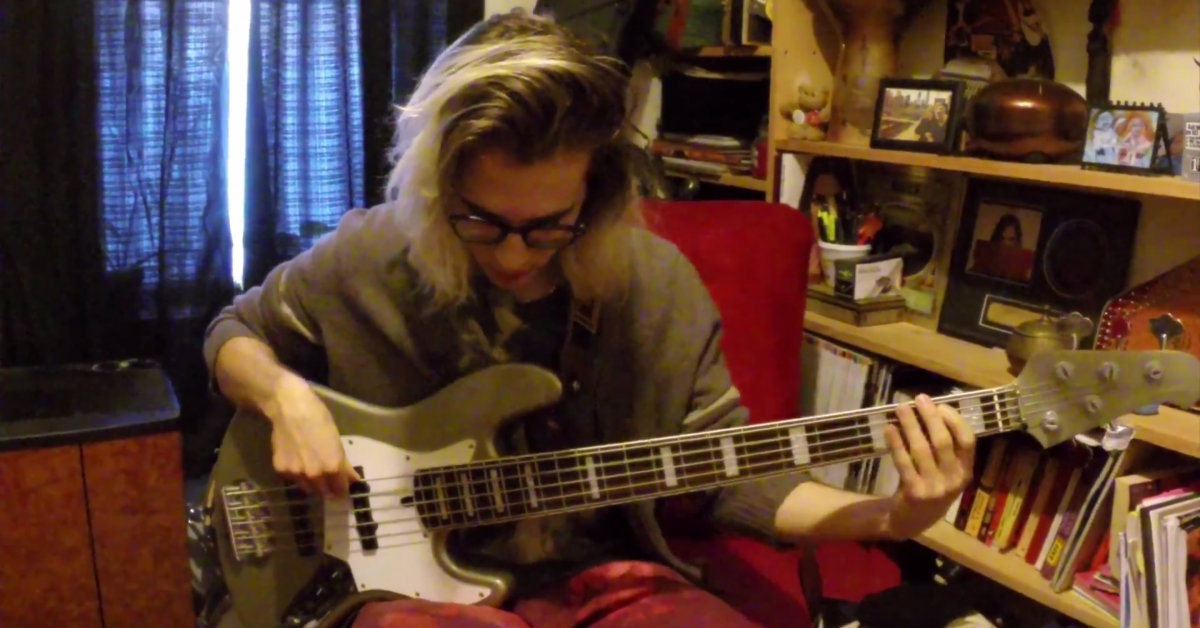The Advantages of Double DI Bass Tracks
Article Content
Recording electric bass may seem simple, but there can be some surprises along the path … or signal path, that is.
I have stated in other articles and videos that I like to record both an amp and a DI signal. I find that the tone comes from the amp and the punch comes from the DI. This is nothing new to many.
Setting up a bass amp is not always practical though. In which case, I’ll either need to reamp later or use an amp simulator. For amp sims, I’ve been using the Softube Bass Amp Room which actually sounds great.
Splitsville
Even when I recorded direct I still use a Radial Passive DI to split my signal. My Apollo interface accepts instrument level signals, but I want to have two signals to process differently.
I process the first line through the Softube Amp Room set to 100% amp feed. This tends to have a little more grit and air.
The second signal I’m going to treat like a clean DI. I may use the Softube Bass Amp Room on that as well, but set to 100% DI. It has a nice DI sound with EQ options.
I may also just use the UAD 610 preamp or the UAD Neve 1073 on the DI clean signal. That’s three options for treating the DI signal.
Within the Softube Bass Amp Room, you have the option to create a blend of DI and amp. This is a great feature in a pinch, but I prefer to have the flexibility to process each signal separately.



Fraternal Twins
It’s likely I’m going to want to compress or EQ the two signals differently. Because I’m using Console from UAD, I can print effects. This is partly why I choose this method as well. I dial in my sound to be as close to finished as possible while tracking.
Console allows me to record using the same methods I’ve used for many years in analog studios. If you’re not using the Apollo, you won’t necessarily need to split the signal. Unless …
Got the Buzz?
There are certain effects pedals for bass that just sound better in analog form. For instance, fuzz. I always prefer analog fuzz on bass. I use the British Pedal Company MKII Tonebender a lot. Big Muff is a standard as well.
There are some pedals like the Creation Audio Grizzly Bass overdrive specifically made for bass. Better than ITB by leaps and bounds.
These tones don’t really exist ITB yet.
It’s usually a good idea when recording with effects (especially if they’re extreme) to grab a clean signal as well. You might find later that the fuzz tone is disappearing into the mix and you need some punch.
In comes the DI signal to save the day. This also allows you to not be scared about making radical choices on bass tones. Go with your gut. Throw a ZVex Wooly Mammoth on there if you’re feeling it. You’re not committed.
It’s not just about a safety though. A cleaner sound tucked below a fuzz tone can actually make it sound bigger. It’s one of those instances where you don’t even know it’s there, but it’s supporting.
Safe And Sound
Speaking of safeties. We’ve all had that session where we didn’t catch noise in the line of fire. Or perhaps the amp sounded fine until the bridge of a perfect take when it started to crackle.
If amp noise makes an appearance and is a deal breaker in a track, you have a clean DI to prevent a disaster.
As an audio engineer, you should always be checking for clean signals. Sometimes, you may miss something in the context of a full band playing though.
Matchmaker
In the event that you’re going to reamp later, you should read my article about reamping. There is some important information in there about latency and phase.
Master Blaster
If you’re recording bass DI into an audio interface, you might consider adding a DI box to your chain. As well as being able to split your signal, it can come in handy as a pad.
Some bass guitars have massive output. A Gibson EB-0 sounds amazing, but will also blow your roof off. The pickups are very high output.
If your preamp or interface doesn’t have a pad on it, a DI will definitely come in handy. I did a session recently where a bassist brought in a vintage EB-1. Even with the gain knob fully down on my mic pre, the signal was still too hot.

Try this yourself and think about how you can process two DI signals differently. Post your results if you come up with something interesting!





